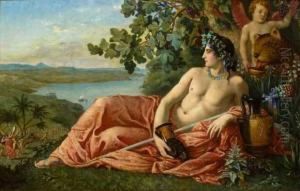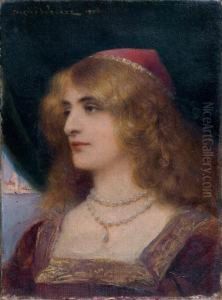Jacques Wagrez Paintings
Jacques Clément Wagrez, born in 1850 in Paris, France, was a distinguished French painter and illustrator known for his academic style and historical genre works. His artistic journey began with his education at the prestigious École des Beaux-Arts in Paris, where he studied under the tutelage of esteemed artists like Alexandre Cabanel, a leading figure in the French academic painting tradition. Wagrez quickly developed a unique style that blended classical academic rigor with a soft, romantic sensibility, making his works highly sought after in the art circles of his time.
Wagrez's oeuvre predominantly features scenes inspired by history, mythology, and literature, showcasing his profound interest in storytelling through visual means. His paintings often depicted scenes with a meticulous attention to detail, rich color palettes, and an almost ethereal quality to his figures. This combination lent his works a timeless appeal, allowing them to resonate with audiences both in his time and today. One of his most celebrated works, 'Cinderella', exemplifies his skill in blending realism with fantasy, capturing the imagination of viewers and transporting them into the narrative.
Throughout his career, Jacques Wagrez exhibited at several prestigious venues, including the Paris Salon, an annual art exhibition in France that was the most important art event in the Western world at the time. His contributions to art were not limited to painting alone; he was also a prolific illustrator, contributing to various publications and books, thus broadening the reach of his artistic vision.
Despite his success, Jacques Clément Wagrez has not been as widely remembered as some of his contemporaries. However, his work continues to be appreciated by art historians and collectors for its beauty, craftsmanship, and the window it provides into the academic art traditions of the 19th century. Jacques Wagrez passed away in 1908, leaving behind a legacy that, though perhaps not as celebrated as that of some of his peers, remains an important part of the fabric of French art history.

